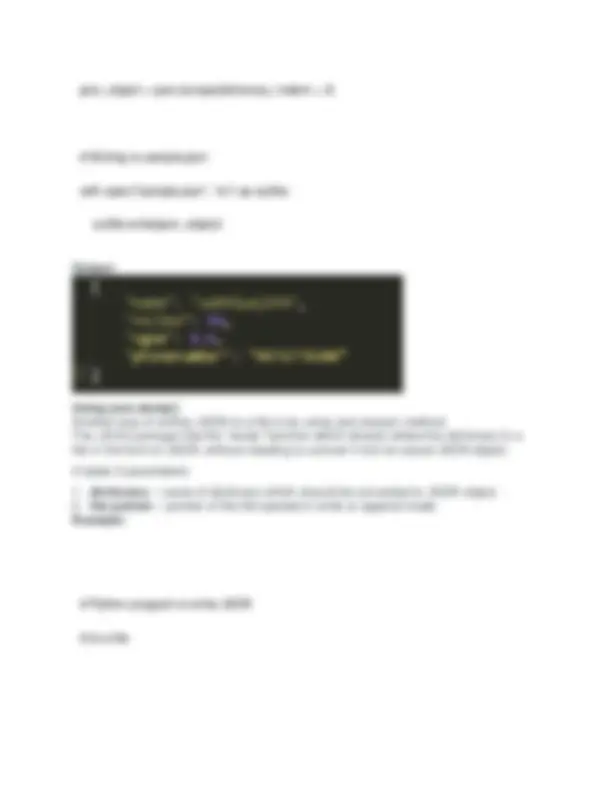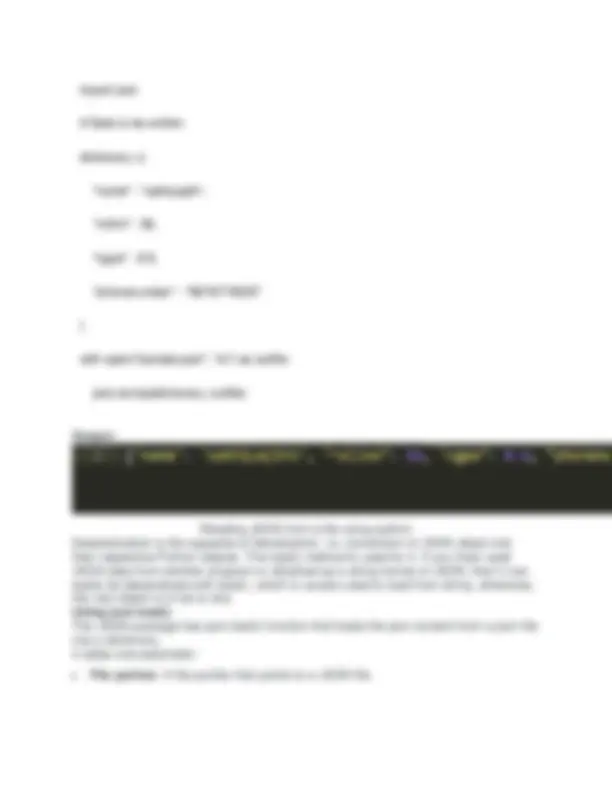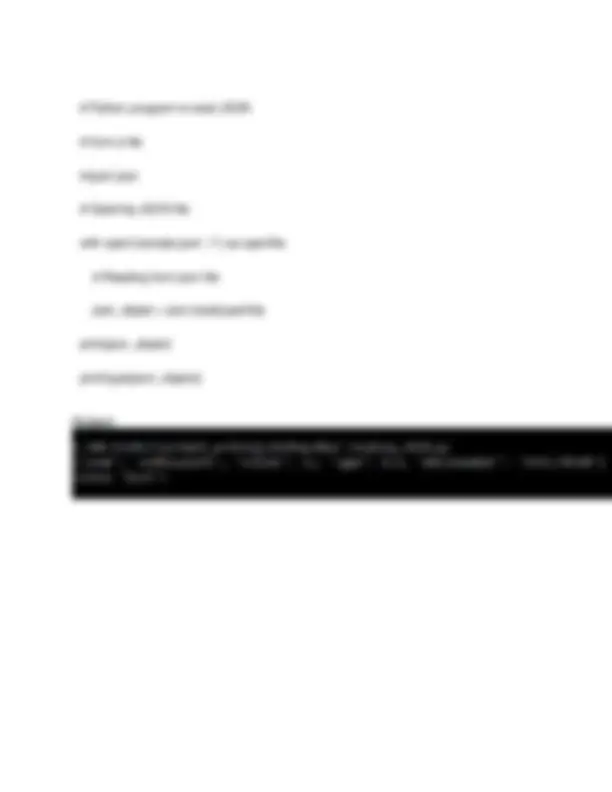





Study with the several resources on Docsity

Earn points by helping other students or get them with a premium plan


Prepare for your exams
Study with the several resources on Docsity

Earn points to download
Earn points by helping other students or get them with a premium plan
Community
Ask the community for help and clear up your study doubts
Discover the best universities in your country according to Docsity users
Free resources
Download our free guides on studying techniques, anxiety management strategies, and thesis advice from Docsity tutors
How to write and read JSON objects in Python using the built-in json package. It covers the concepts of serialization and deserialization, and provides examples of using json.dumps() and json.dump() to write JSON to a file, as well as json.load() to read JSON from a file.
Typology: Lecture notes
1 / 5

This page cannot be seen from the preview
Don't miss anything!




Reading and Writing JSON to a File in Python The full-form of JSON is JavaScript Object Notation. It means that a script (executable) file which is made of text in a programming language, is used to store and transfer the data. Python supports JSON through a built-in package called json. To use this feature, we import the json package in Python script. The text in JSON is done through quoted string which contains the value in key-value mapping within { }. It is similar to the dictionary in Python. Writing JSON to a file in python Serializing JSON refers to the transformation of data into a series of bytes (hence serial) to be stored or transmitted across a network. To handle the data flow in a file, the JSON library in Python uses dump() or dumps() function to convert the Python objects into their respective JSON object, so it makes easy to write data to files. See the following table given below. PYTHON OBJECT JSON OBJECT dict object list, tuple array str string int, long, float numbers True true False false None null Using json.dumps() The JSON package in python has a function called json.dumps() that helps in converting a dictionary to a JSON object. It takes two parameters:
import json
dictionary ={ "name" : "sathiyajith", "rollno" : 56 , "cgpa" : 8. 6 , "phonenumber" : "9976770500" } with open("sample.json", "w") as outfile: json.dump(dictionary, outfile) Output: Reading JSON from a file using python Deserialization is the opposite of Serialization, i.e. conversion of JSON object into their respective Python objects. The load() method is used for it. If you have used JSON data from another program or obtained as a string format of JSON, then it can easily be deserialized with load(), which is usually used to load from string, otherwise, the root object is in list or dict. Using json.load() The JSON package has json.load() function that loads the json content from a json file into a dictionary. It takes one parameter: File pointer: A file pointer that points to a JSON file.
import json
with open('sample.json', 'r') as openfile:
json_object = json.load(openfile) print(json_object) print(type(json_object)) Output: